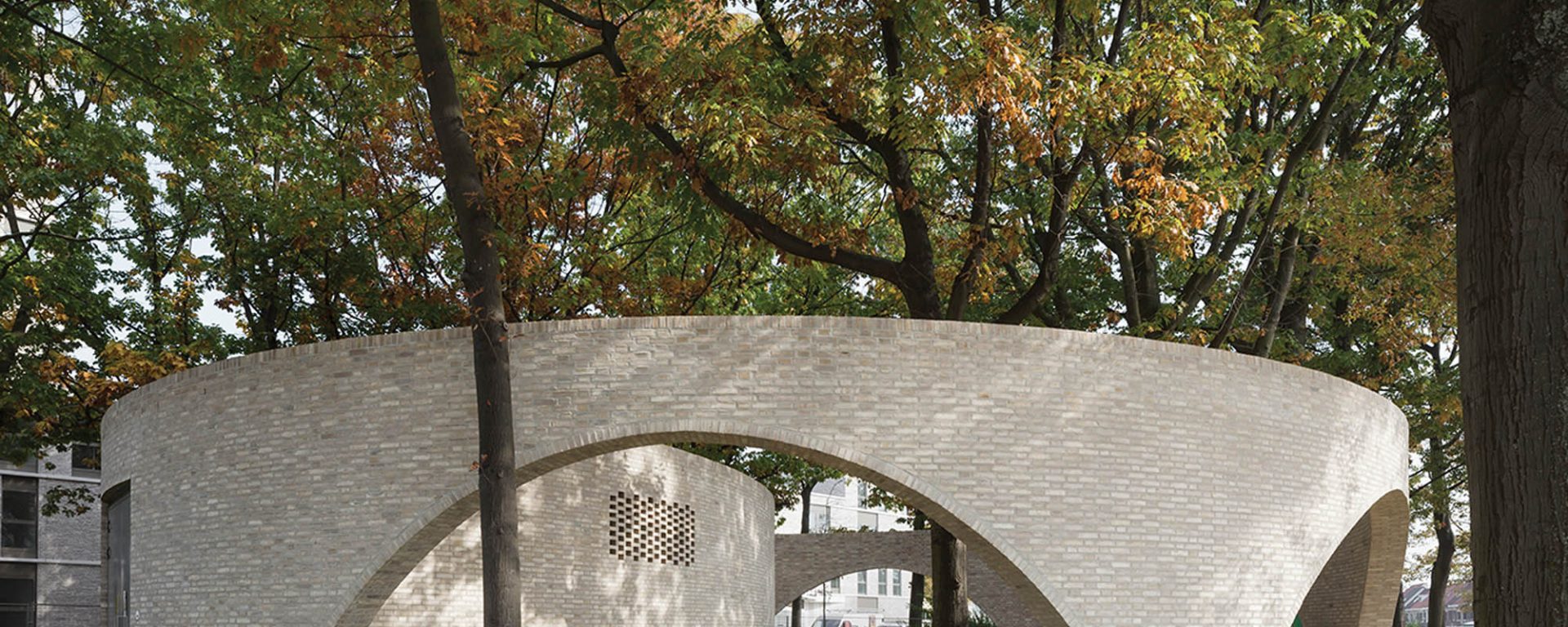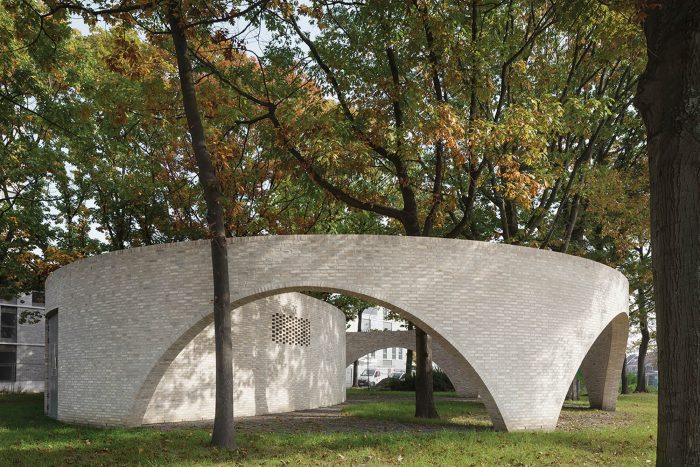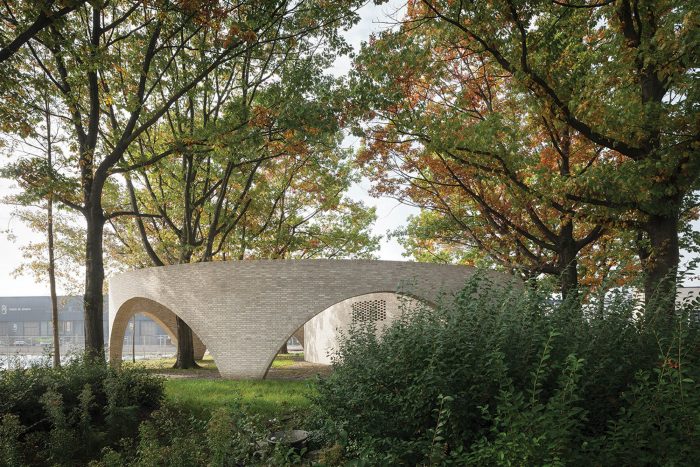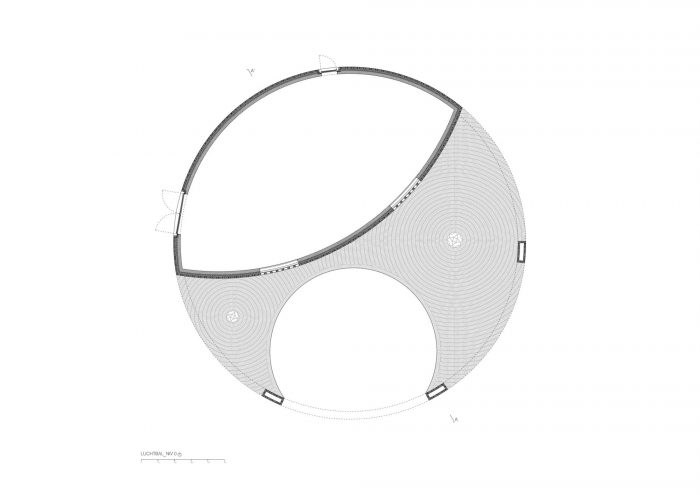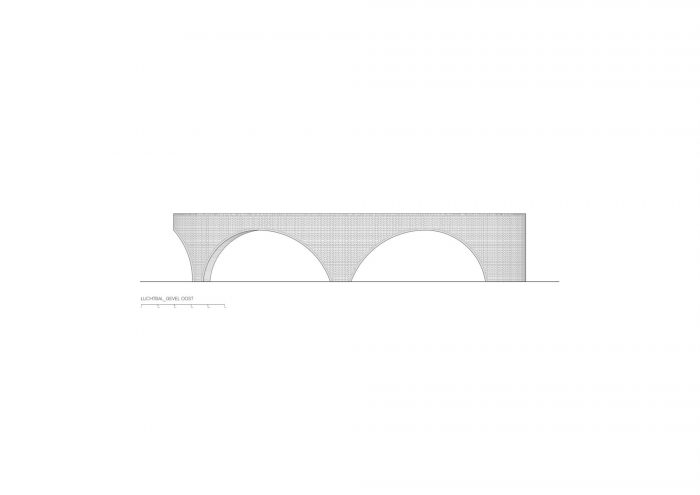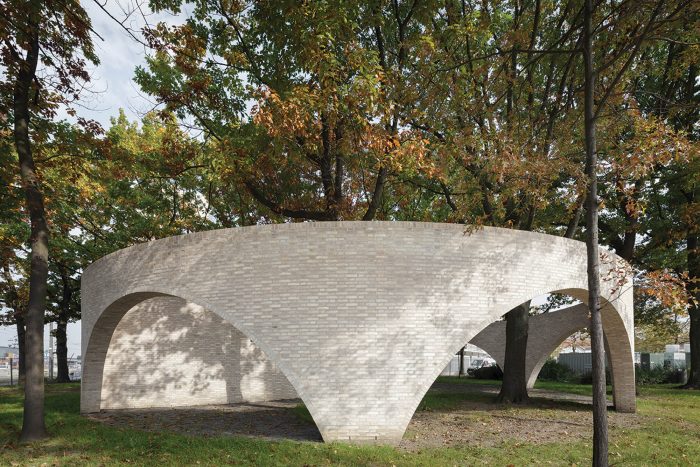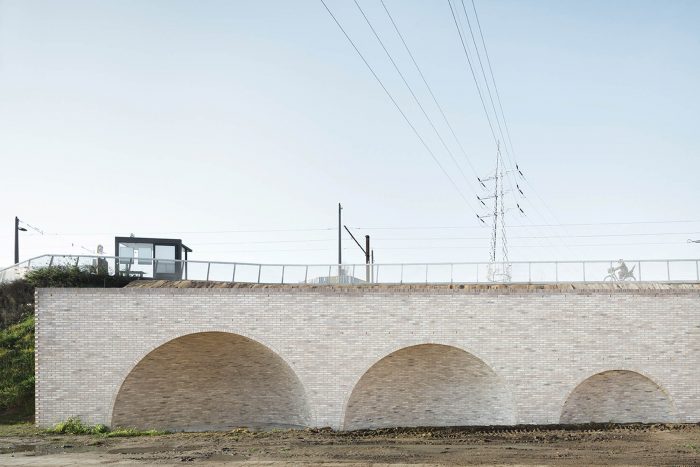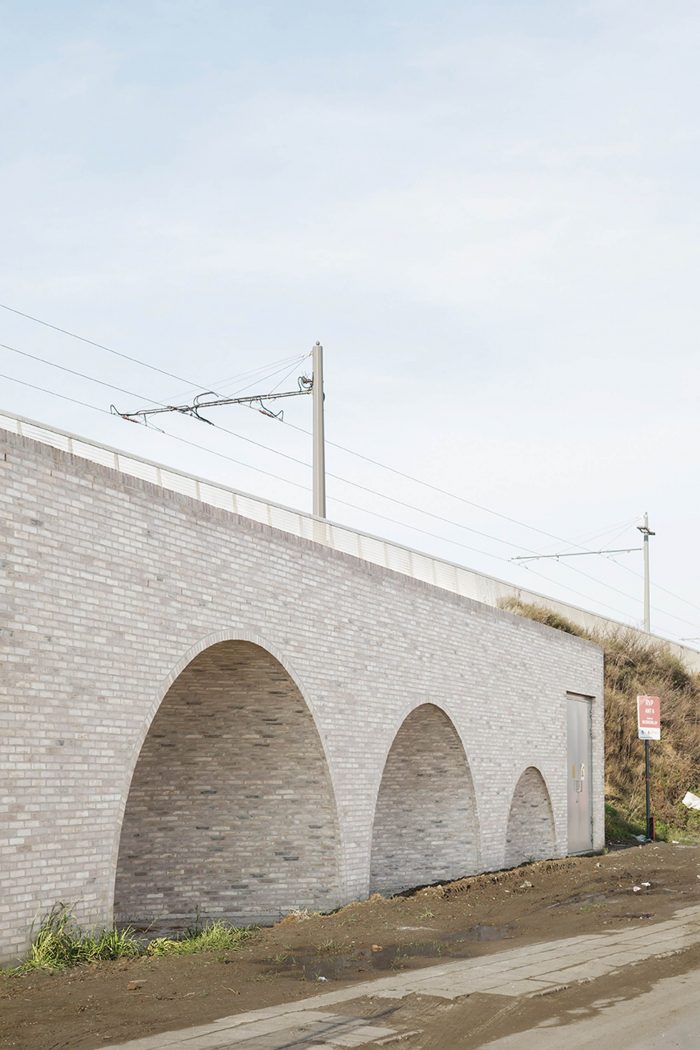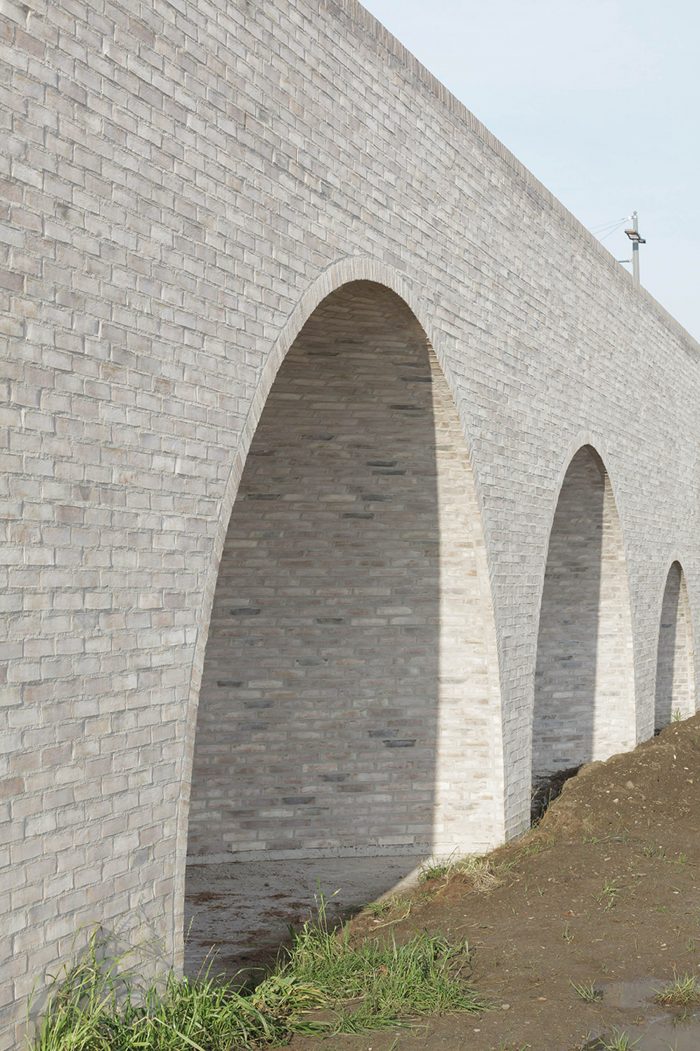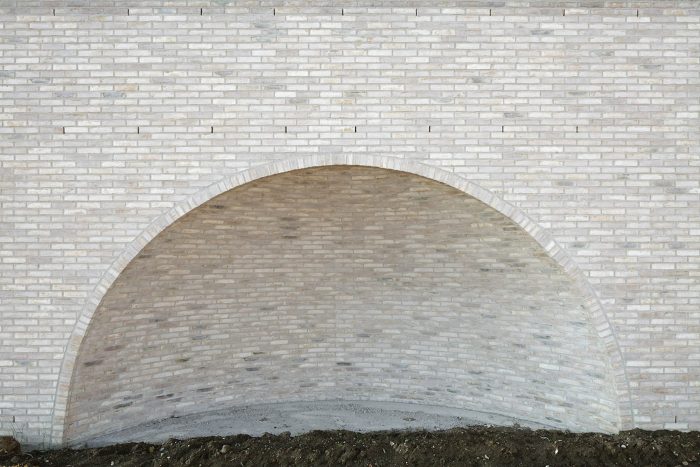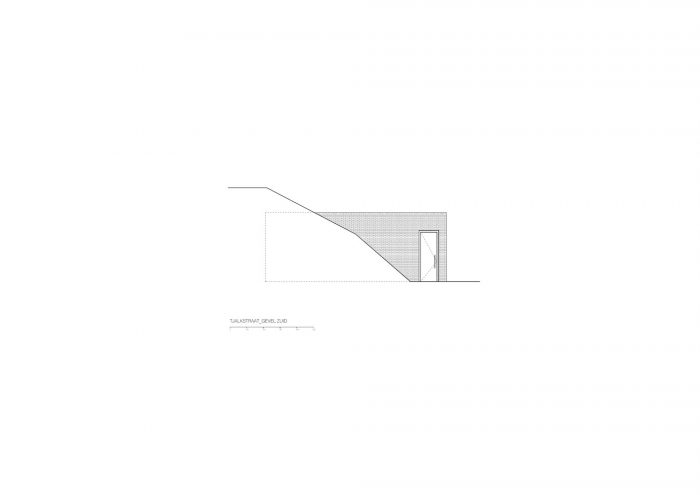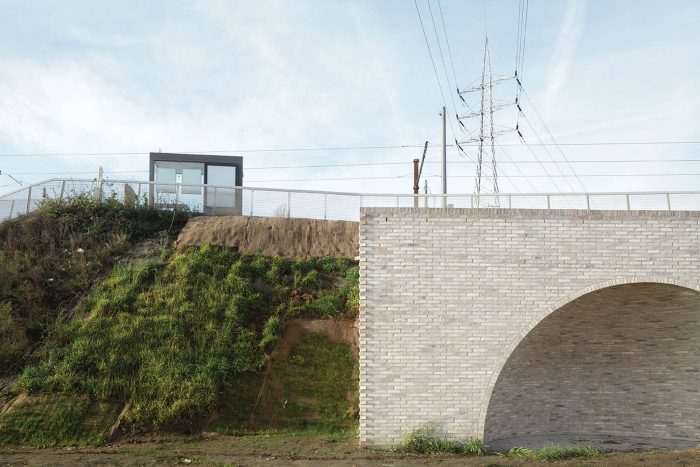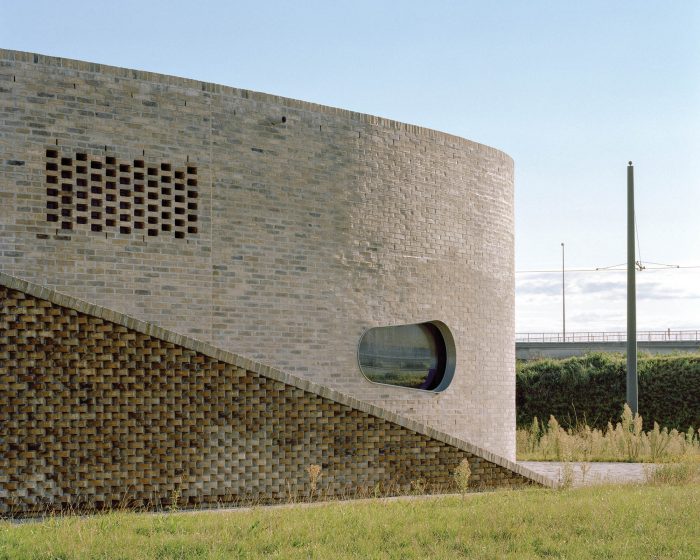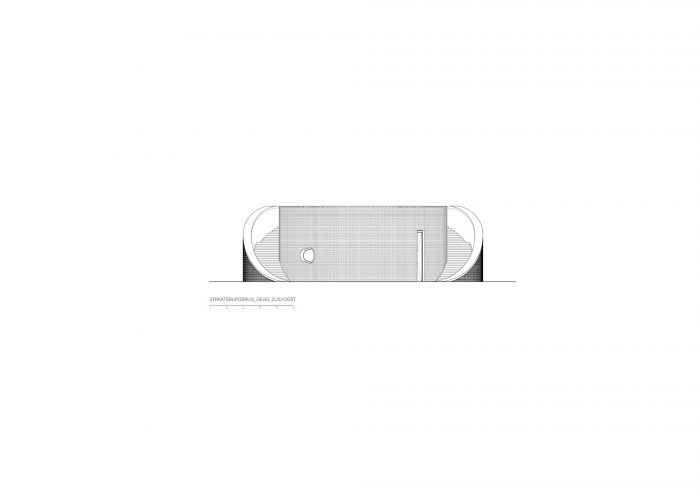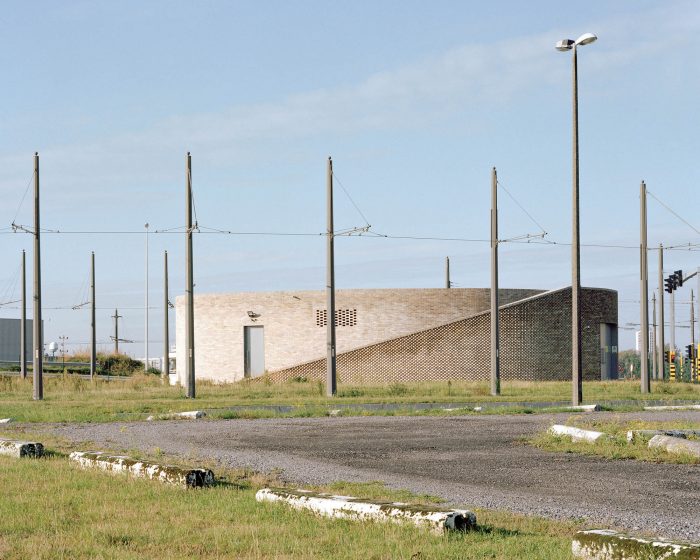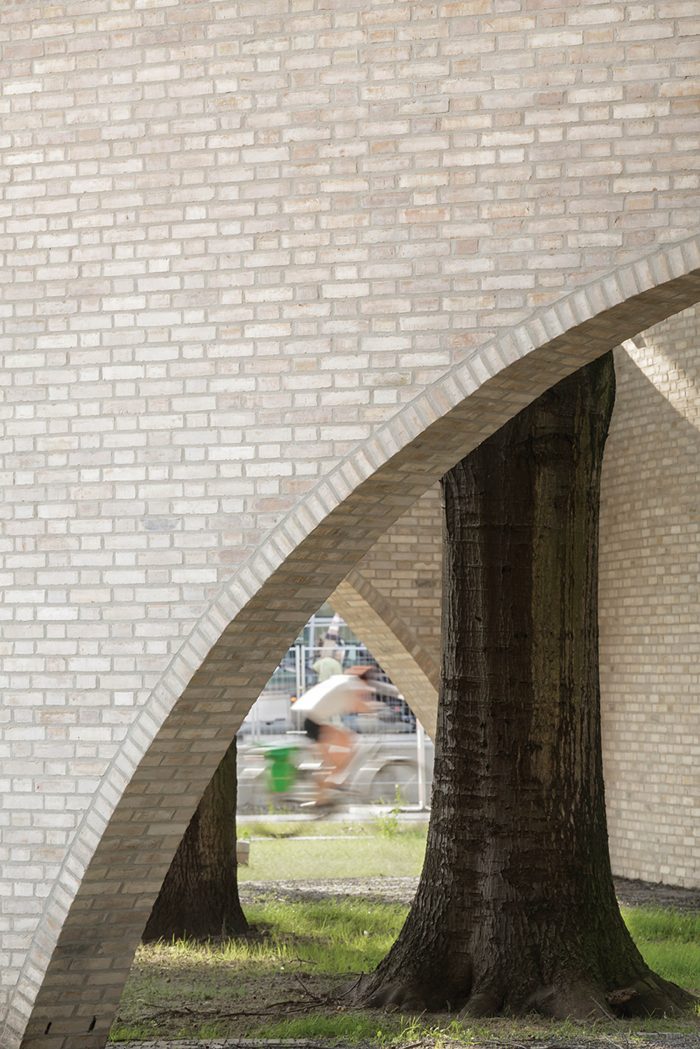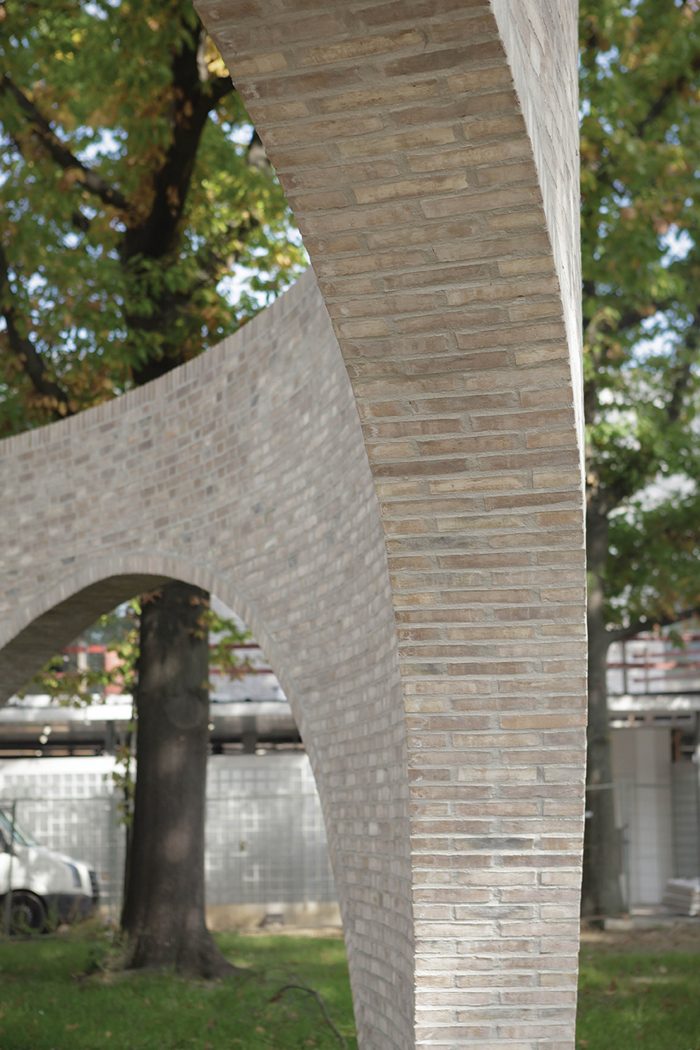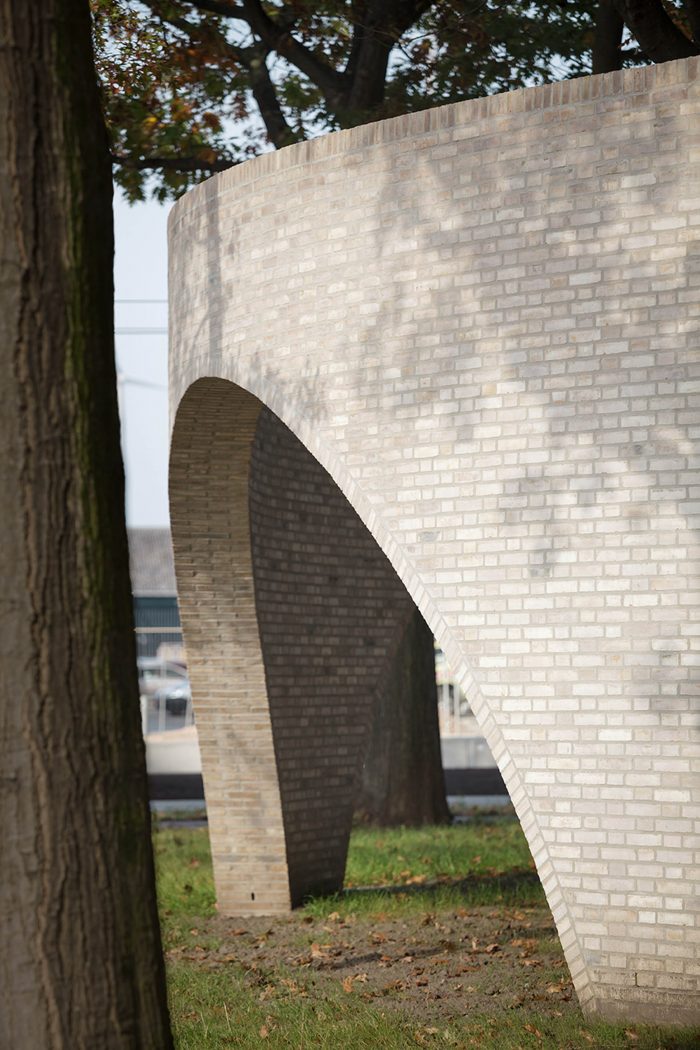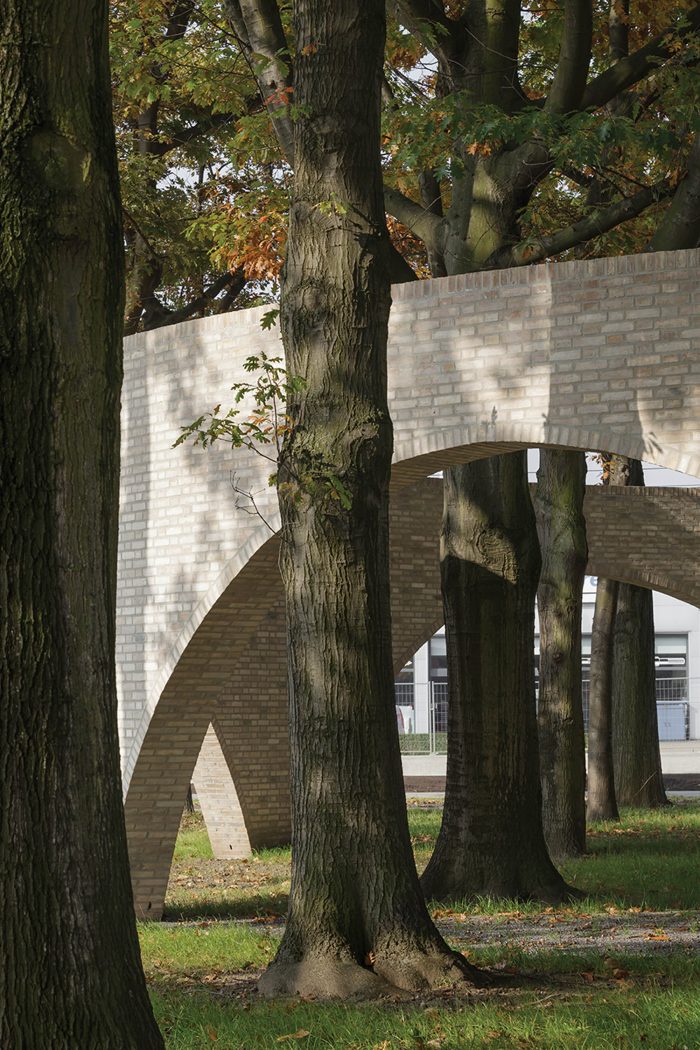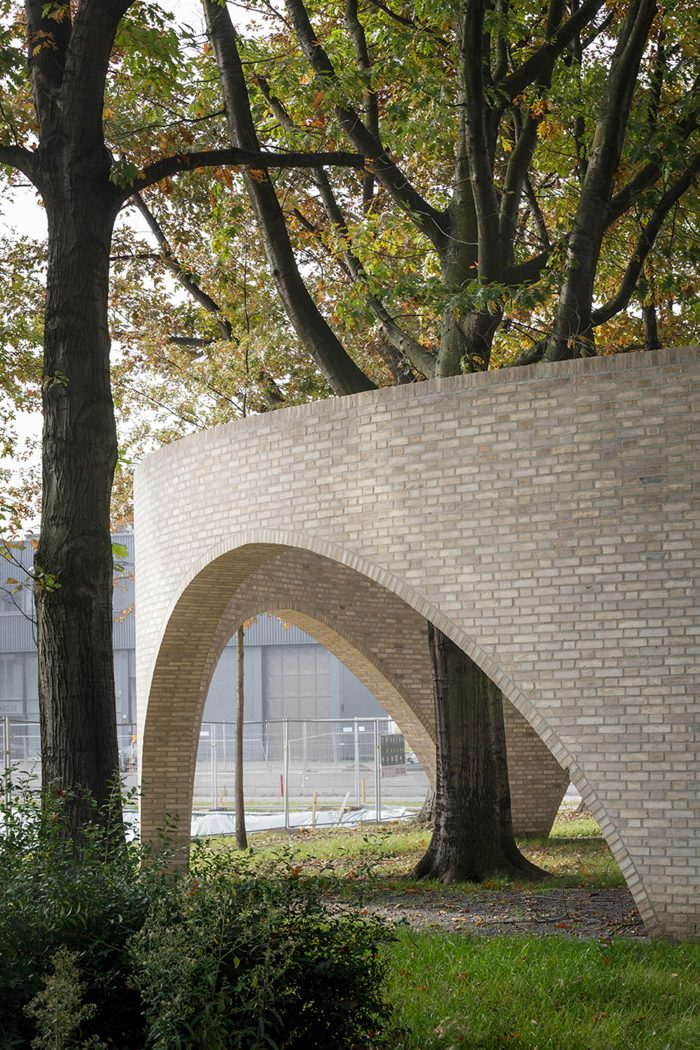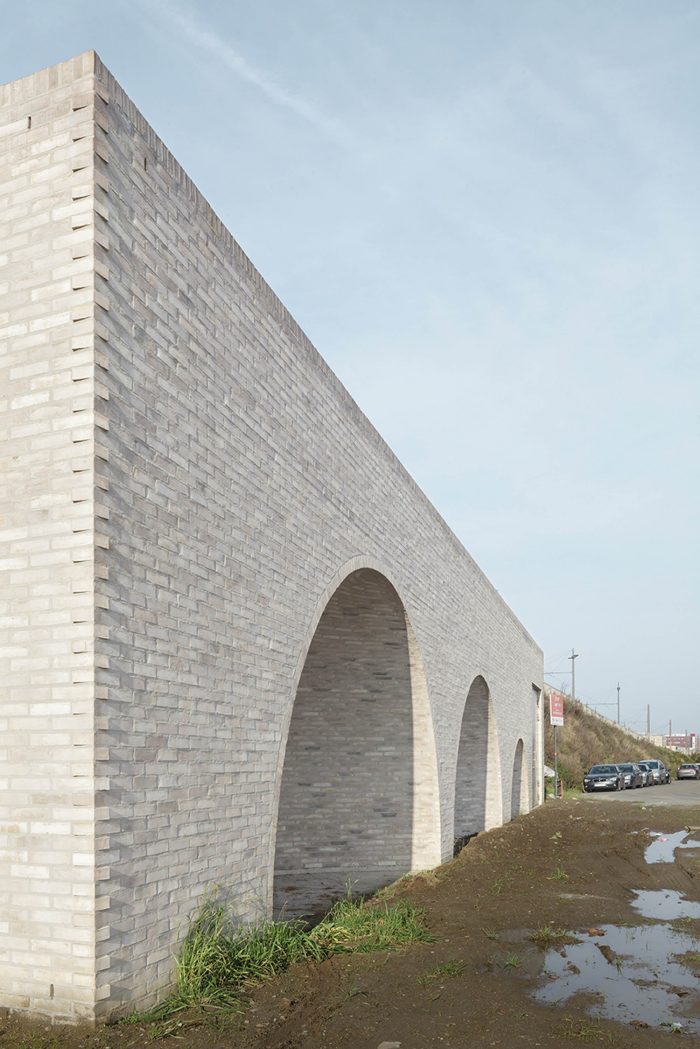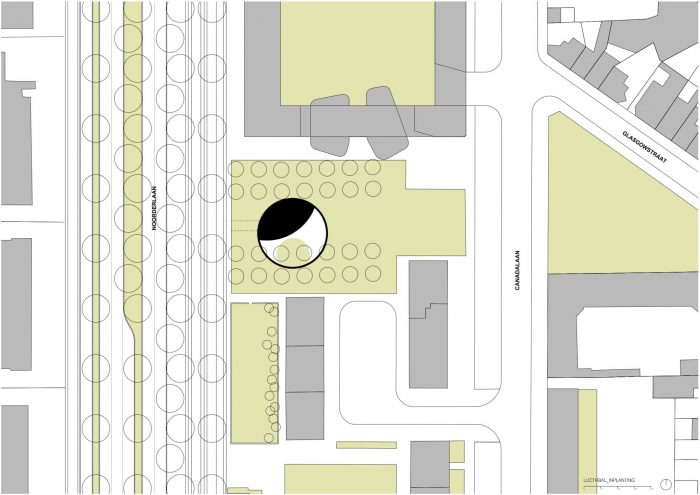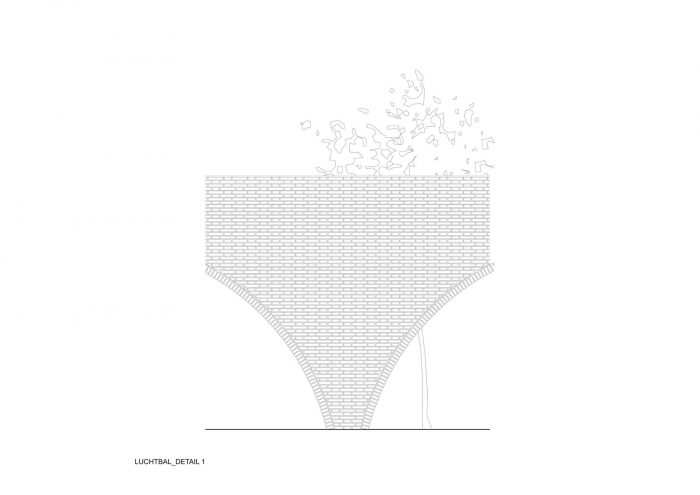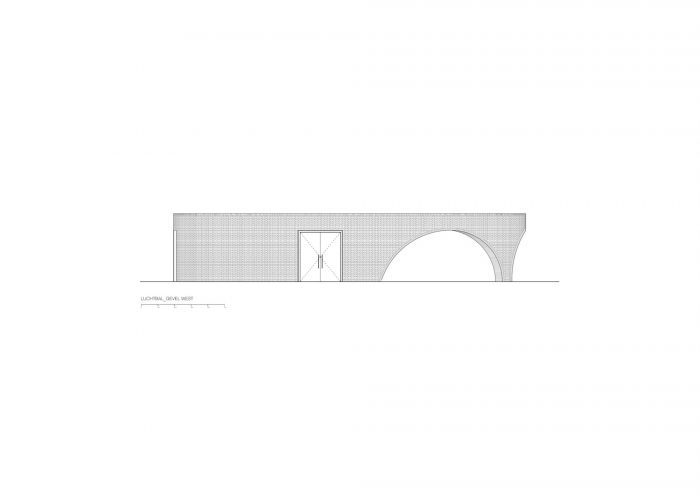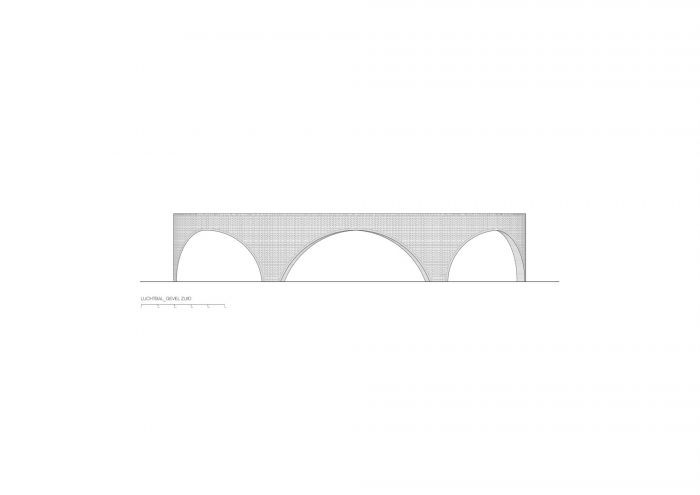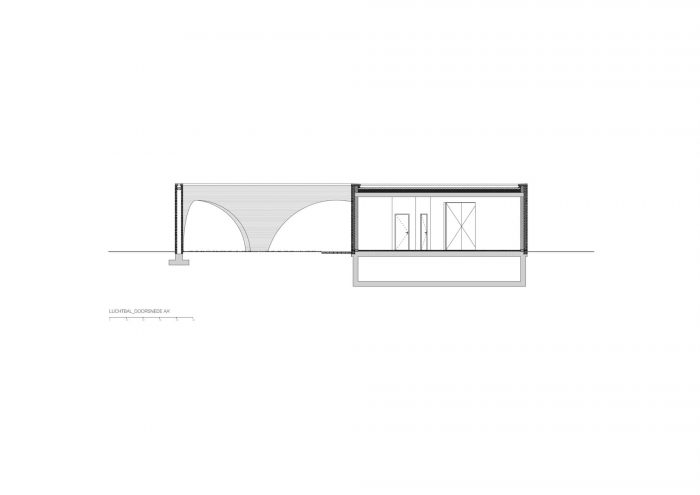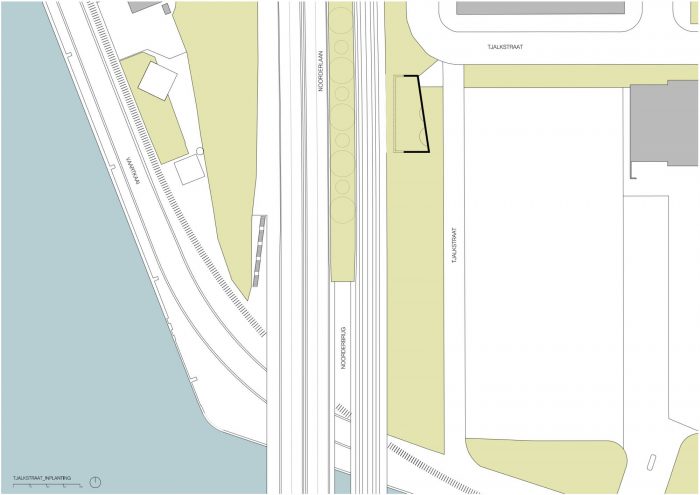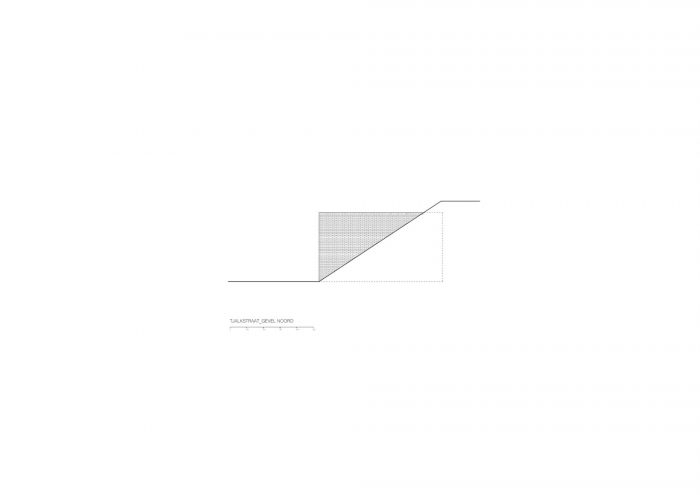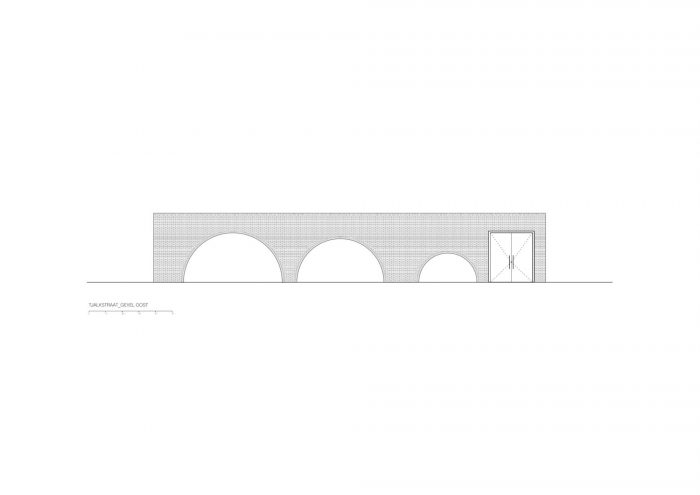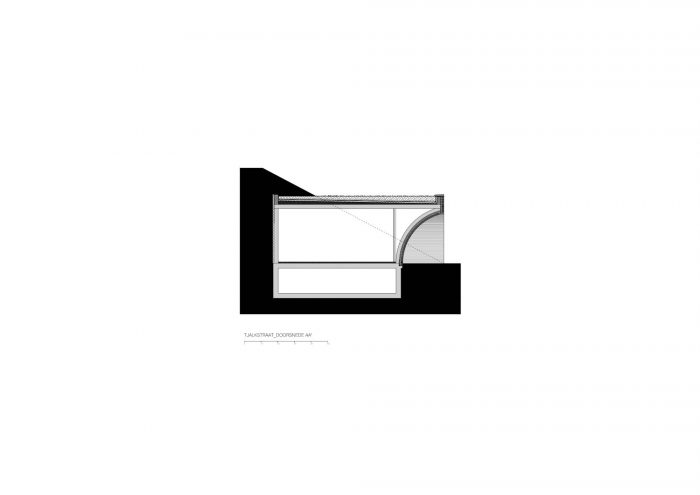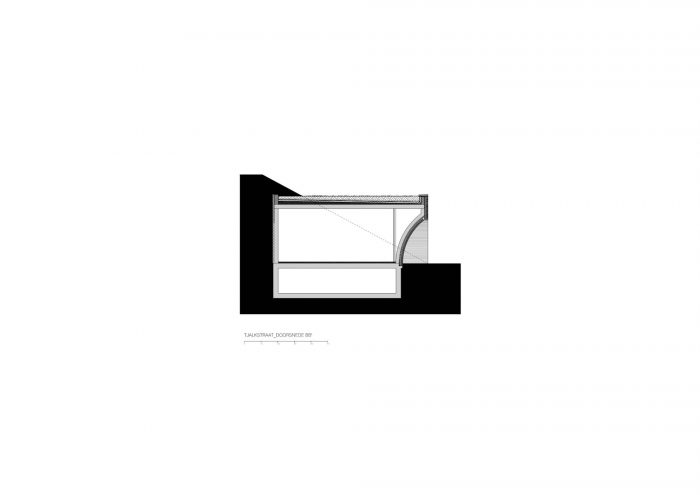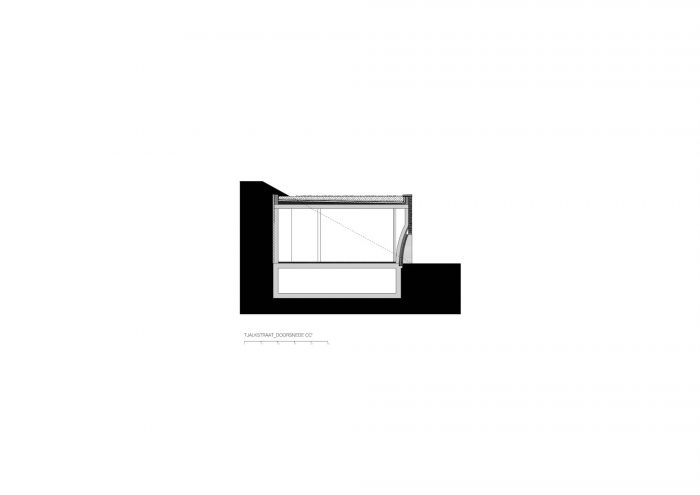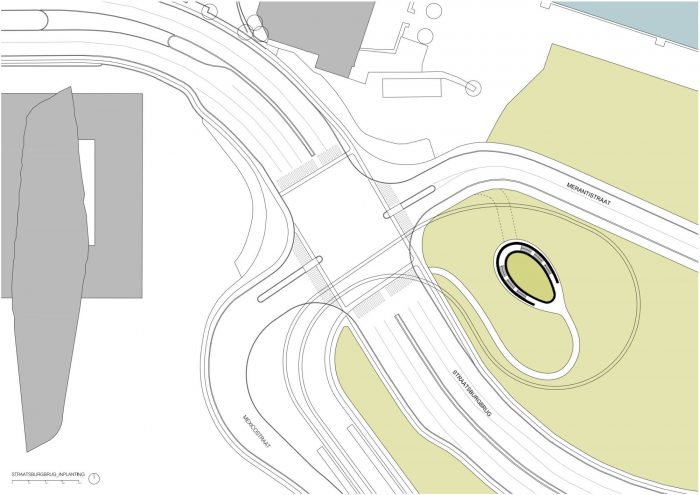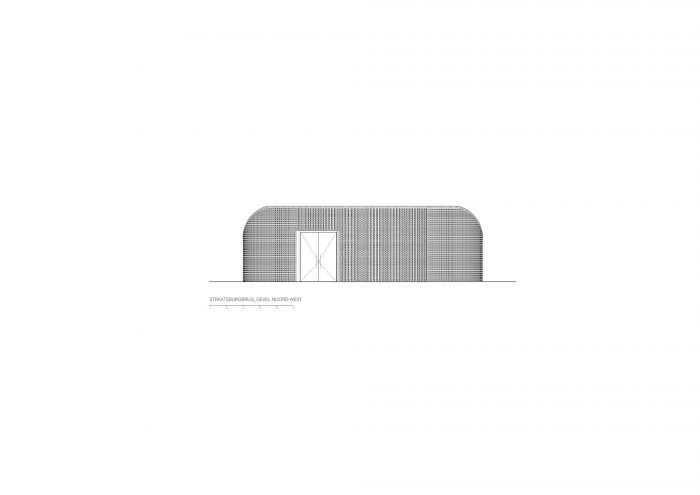该任务包括三个有轨电车牵引站的设计,并受比利时公共交通公司De Lijn的委托。这三个电气舱为安特卫普北部的新电车线路提供电力。这三个不同的位置是一个更大的整体的一部分。
“Brabo2:从安特卫普Rooseveltplaats到Luchtbal和Eilandje地区的新电车线路”。
The assignment consists of the design of three tram traction stations and was commissioned by De Lijn, the public transport company of Belgium. The three electrical cabins provide power to the new tram line in the north of Antwerp. The three different locations take part of a larger whole:
“Brabo2: the new tram line from Rooseveltplaats Antwerp to Luchtbal and the Eilandje area”.
三个不同的地点和技术要求,通过利用每一个特定的环境,产生了三个不同的建筑:在Luchtbal住宅区Noorderlaan的一个小公园里,在Tjalkstraat的一个公共汽车公园旁边的桥下,以及在扎哈-哈迪德的港口大厦对面的十字路口。
The three different locations and technical requirements give as a result three different buildings, by making use of every particular setting; in a small park on Noorderlaan in the Luchtbal residential area, under a bridge next to a bus park in Tjalkstraat, and on the cross roads opposite of Zaha Hadid’s Port House.
这三座建筑的特殊建筑风格都不仅仅是为了安置技术设备。它们丰满的砖块形式将它们转化为亭子,将诗意引入不同的、困难的城市场地。该项目为城市叙事做出了贡献,创造了前所未有的景观视野,审视了可持续发展的意义,探索了建筑学科所代表的边界。
The particular architecture of every of the three buildings does more than to house technical installations. Their voluptuous brick forms transform them into pavilions, introducing poetry into the different and difficult urban sites. The project contributes to an urban narrative, creating unprecedented views of the landscape, examining what sustainability means and exploring the boundaries of what the architectural discipline stands for.
车站的设计考虑到了其背景下的城市和景观品质。场地的复杂性和基础设施之间的共生关系,使三个不同的对象具有三种不同的建筑特征和城市意义。
亭子成为城市结构的一部分,它们的形式和表达方式重新创造了建筑、基础设施和自然之间的对话。
The stations are designed taking into account the urban and landscape qualities of its context. The symbiosis between site complexity and infrastructure, gives as a result three different objects with three different architectural identities and urban meaning.
The pavilions become part of the urban fabric, and their form and expression recreate the dialogue between architecture, infrastructure, and nature.
每一座建筑的定位都是为了给周围足够的使用自由度,尊重周围的景观元素,并将其纳入到建筑的规划组织中。
Every building is positioned on the site in order to give enough freedom of use around it, respecting the surrounding landscape elements and including them into the planning organization of the buildings.
Luchtbal地区是一个绿色走廊的一部分,以建筑群为界。车站被设想为一个花园亭子,为公园增加结构和质量,创造视觉关系,激活社会活力。
一面带有拱形开口的墙在公园中划出了一个圆圈,在一个单一的姿态中,包含了小木屋、现有的树木和雕塑。
The Luchtbal area is part of a green corridor bounded by a constellation of buildings. The station is conceived as a garden pavilion to add structure and quality to the park, creating visual relationships and activating social dynamism.
A wall with arched openings marks out a circle in the park which, in a single gesture, contains the cabin, the existing trees and sculpture.
Tjalkstraat车站位于Noorderlaan的斜坡上,它的构思就像一堵由砖头砌成的墙,有三个半圆形的凹槽。这种姿态为任何等待电车的人提供了一个诱人的庇护。这座建筑让我们记住了一个世纪前对公共基础设施设计的重视。
The Tjalkstraat station is located on the slope of the Noorderlaan, and it is conceived like a masonry wall of bricks with three semicircular recesses. This gesture provides an inviting shelter to anyone who is waiting for the tram. The building remembers us to the great care that public infrastructural interventions where designed a century ago.
斯特拉斯堡桥站位于扎哈-哈迪德设计的新港口大厦的东侧,它被设计成一个休息和眺望港口大厦、Kattendijkdok和阿尔伯特运河的地方。
该规划是按照电车环线的轨迹发展的,结合了两个楼梯,将游客提升到屋顶层。就像一个小型的停泊柱,该建筑提供了一个微妙而又不失讽刺意味的反击,与Port House的主导建筑相呼应。
The Strasbourg Bridge station is located to the east of the new Port House designed by Zaha Hadid, and it is conceived as a place to take rest and lookout to the Port House, the Kattendijkdok, and the Albert Canal.
The plan is developed following the trace of the tram loop, incorporating two staircases which lift the visitor to the roof level. Like a small mooring post, the building offers a subtle and not unironic riposte to the dominant architecture of the Port House.
虽然通用的概念是让每一个体量都适应其特定的环境和基础设施的要求,以达到不同的体量效果,但三座建筑之间建立的关系是由其材料性所决定的。它们使用相同的砖块,使它们看起来都是同一个家庭的一部分,但具有不同的建筑和城市品质。这种材料每次都会以不同的特殊方式应用,使用不同的砖石结合,细节和构造。
其目的是要达到一定的连贯性,一个既现代又永恒的形象,并且本能地属于这个地方。这个项目的雄心在于形成一个最新的形象,作为用户和游客的地标。
Although the generic concept is to adapt every volume to its specific context and infrastructural requirements, in order to achieve different volumetric results, the relationship established between the three buildings is stablished by its materiality. They are made with the same brick, in a way that they look all to be part of the same family but with different architectonical and urban qualities. This material will be applied in a different and special ways each time, using different masonry bonds, details and tectonics.
The aim is to achieve a certain coherence, an image that is contemporary and timeless at the same time, and that will instinctively belong to the location. The ambition of this project lies in forming an up-to-date image as a landmark for the user and the visitor.
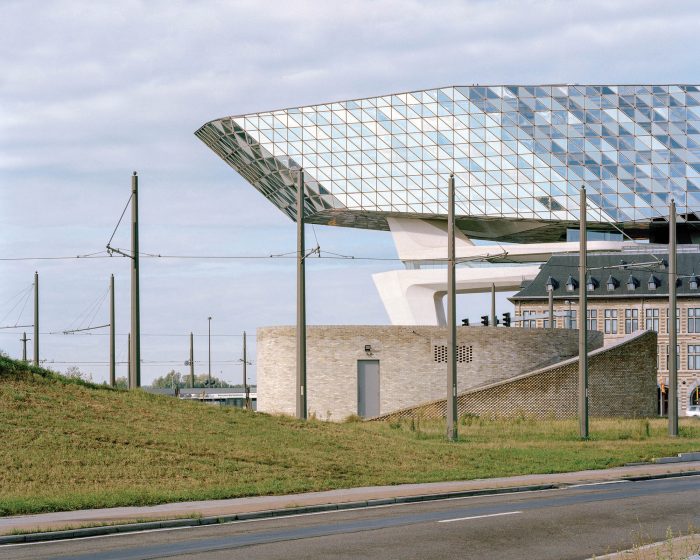
建筑师:Van Belle Medina
面积:2000平方米
年份:2020年
摄影:Stijn Bollaert, Maxime Delvaux
厂家:Petersen Tegl
首席建筑师:Kurt Van Belle, Patricia Medina
绘画:Anna García
城市:Antwerp
国家:比利时
Architects: Van Belle Medina
Area: 2000 m²
Year: 2020
Photographs: Stijn Bollaert, Maxime Delvaux
Manufacturers: Petersen Tegl
Lead Architects:Kurt Van Belle, Patricia Medina
Drawings:Anna García
City:Antwerp
Country:Belgium

